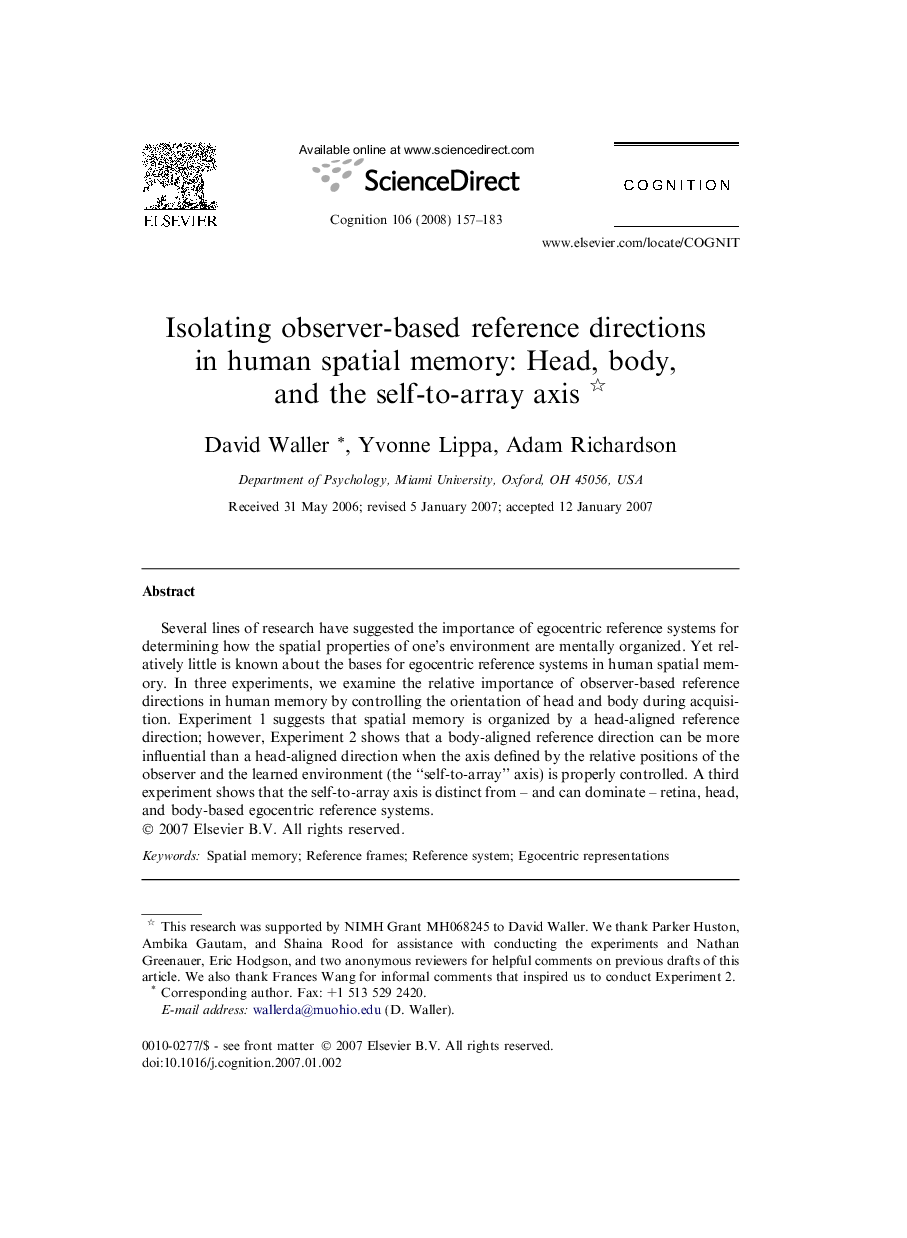| Article ID | Journal | Published Year | Pages | File Type |
|---|---|---|---|---|
| 927428 | Cognition | 2008 | 27 Pages |
Several lines of research have suggested the importance of egocentric reference systems for determining how the spatial properties of one’s environment are mentally organized. Yet relatively little is known about the bases for egocentric reference systems in human spatial memory. In three experiments, we examine the relative importance of observer-based reference directions in human memory by controlling the orientation of head and body during acquisition. Experiment 1 suggests that spatial memory is organized by a head-aligned reference direction; however, Experiment 2 shows that a body-aligned reference direction can be more influential than a head-aligned direction when the axis defined by the relative positions of the observer and the learned environment (the “self-to-array” axis) is properly controlled. A third experiment shows that the self-to-array axis is distinct from – and can dominate – retina, head, and body-based egocentric reference systems.
